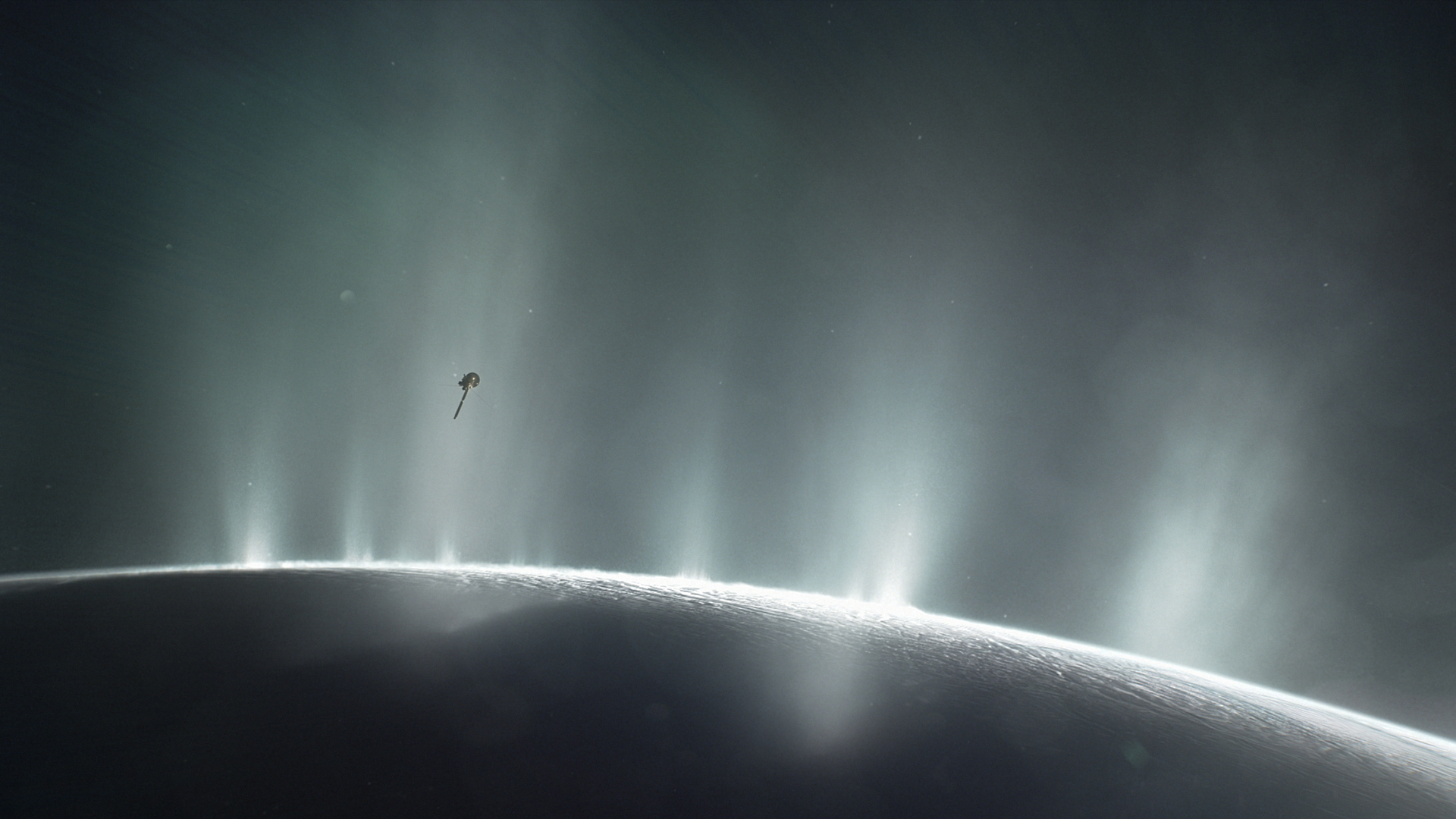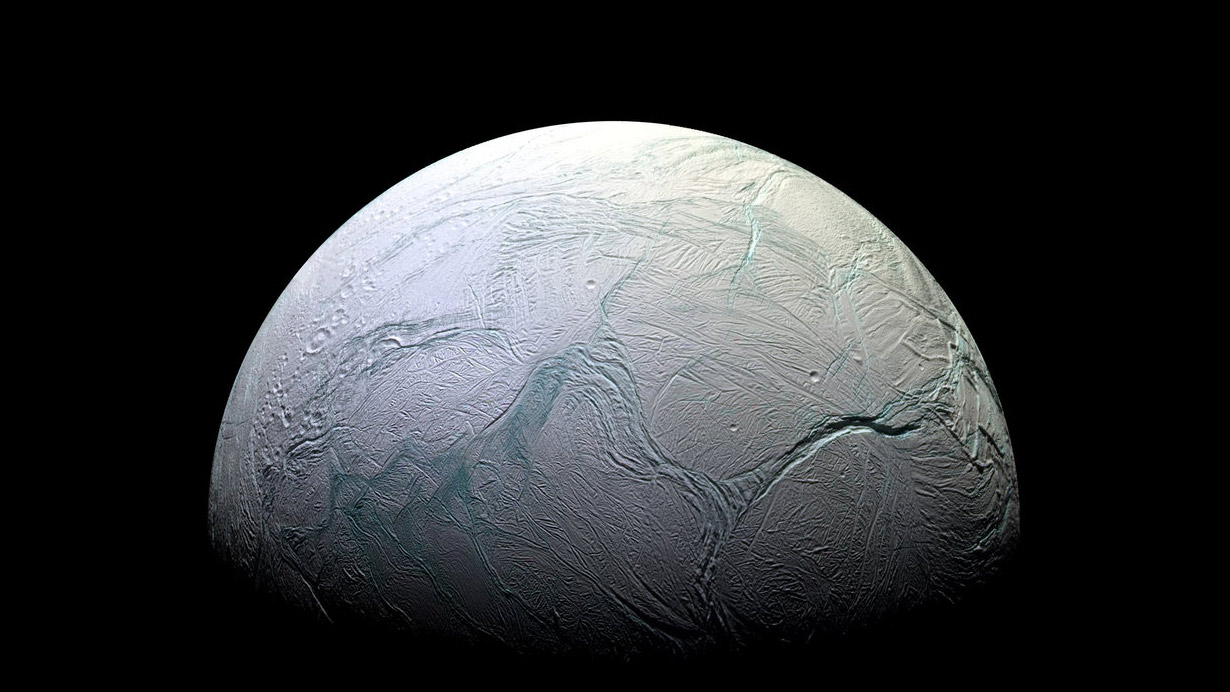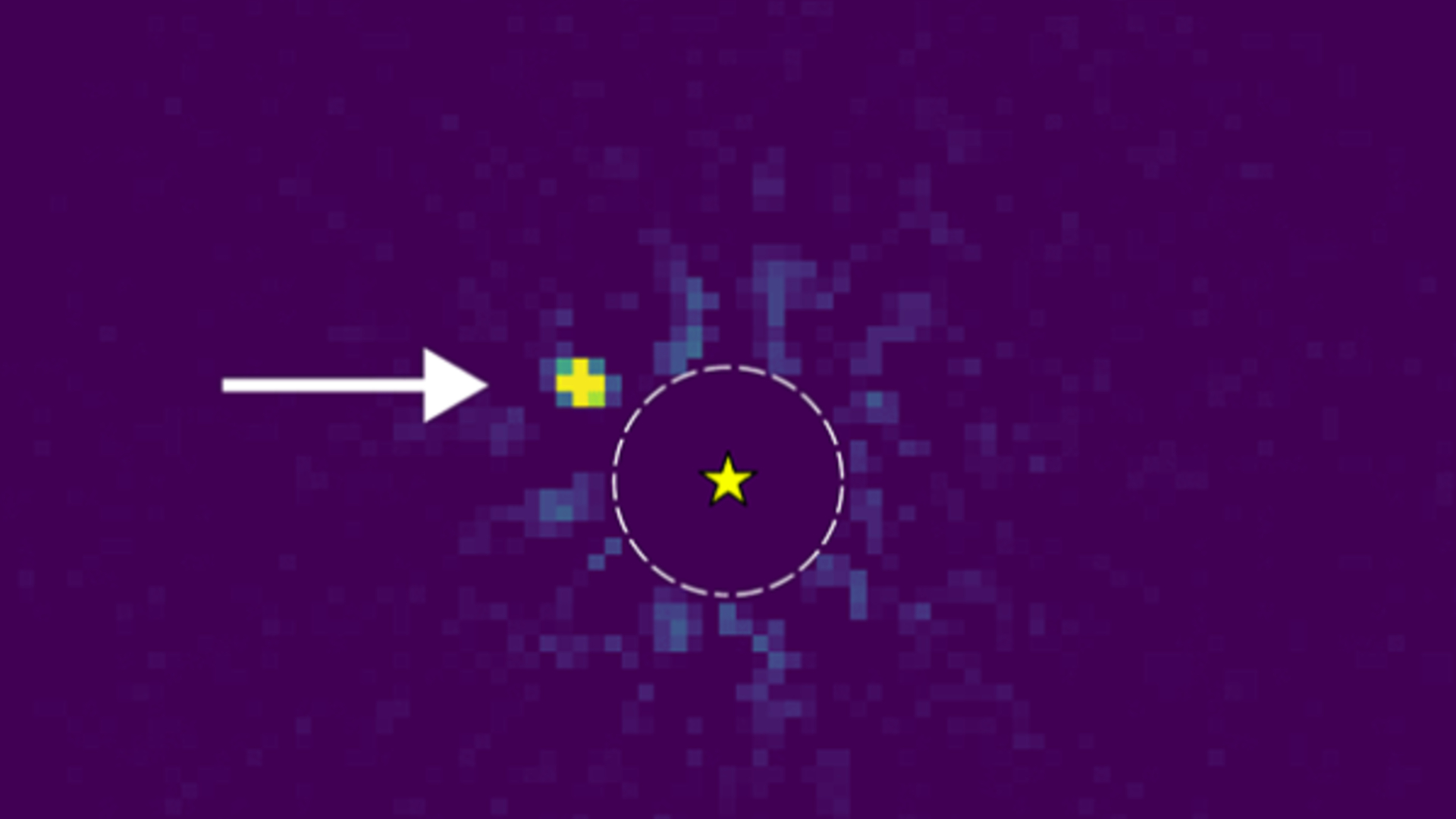Saturn's moon Enceladus has all the ingredients for life in its icy oceans. But is life there?

For the first time, phosphorus — the rarest of six elements upon which life as we know it depends — has been found in a tiny ocean-bearing moon in our solar system.
Scientists combing through data sent home by NASA's Cassini spacecraft nearly 15 years ago said they have found plentiful phosphorus in water geysers that routinely blast into space from Enceladus, a tiny moon of Saturn and one of the most likely places in the solar system where life might exist.
Enceladus is an ice-covered moon that harbors an enormous ocean of liquid water underneath an icy crust. Scientists have previously found other key building blocks of life in the moon's ocean including carbon, hydrogen, nitrogen, sulfur and oxygen. However, phosphorus, which teams up with sugars to form a skeleton to DNA molecules and also helps repair and maintain cell membranes, had so far eluded detection.
The intriguing new findings estimate that concentrations of phosphorus on Enceladus are at least 500 times higher than the highest known concentrations in Earth's oceans. The discovery, announced in a paper published Wednesday (June 14), shows that the icy moon, already one of the hottest candidates in the search for alien life, now satisfies "the strictest requirement of habitability."
"We didn't find life or even something that was created by life," Frank Postberg, a professor of planetary sciences at the Freie Universität Berlin in Germany who led the research, told Space.com. "We have just found signs of something that indicates that life could form there pretty good. It is just a habitability indicator, and a very good and important one," he added.
For the past five years, Postberg and his colleagues have been studying data collected by Cassini back in 2008, when the spacecraft flew through and "tasted" the water geysers that Enceladus spews into space. These powerful water jets are likely triggered as the gravity of the gas giant Saturn's squeezes the moon, heating up its rocky interior. Pressurized water then squirts through cracks in the ice crust, blasting into space at speeds of 79 gallons (360 liters) per second, which is fast enough to fill an Olympic-sized swimming pool in just a couple hours. While most of the plume material falls back as snow on the moon's surface, some of it also feeds Saturn's E ring, a tenuous halo of tiny ice particles. It was these particles that hit Cassini's instruments during its flybys.
Breaking space news, the latest updates on rocket launches, skywatching events and more!
While previous research based on computer models concluded there might be phosphorus on Enceladus, this is the first time that the crucial ingredient has been spotted directly in material from Enceladus' geysers.
"The only thing that isn't so direct is that phosphate salts were found in Saturn's E ring, not in the plume itself," Christopher Glein, a planetary scientist and geochemist at the Southwest Research Institute in Texas who is one of the authors of the new study, told Space.com. "But, we know that Enceladus's plume feeds the E ring. No mystery there," he added.
While browsing through measurements of over 300 ice grains sampled by the Cassini spacecraft and the data reproduced in the lab for validation purposes, the team behind the new study spotted nine grains that had a clear fingerprint of orthophosphate, which is the only form of phosphorus that living organisms can absorb and is used by them for growth.
"It was a tantalizing moment when I first realized that these spectra very likely show phosphates," Postberg said, adding that his team was agnostic while analyzing the data. "I admit phosphate is probably the best thing we could have found, but we never looked for it specifically."
Scientists have been split on the presence of phosphorus in Enceladus. A 2018 study that modeled phosphorus concentrations on the moon concluded that the crucial element would be depleted in the moon's oceans and thus unavailable for potential life. However, the new study "overturns the findings from my past model," Manasvi Lingam, who led the 2018 research but was not part of the new study, told Space.com. "In science, it is common for older theories to be superseded by newer theories and improved data — in fact, this is how the field progresses."
Findings from the latest study agree with what a team of scientists including Glein had found in 2022. Using updated geochemical models, the team had estimated that orthophosphate would in fact dissolve at a much higher rate than previously predicted in Enceladus' waters, resulting in an ocean that could be up to 1,000 times richer in phosphorus than Earth's oceans.
The new study also concluded that orthophosphate is "readily available" in Enceladus' oceans, with the best estimate of its abundance being over 1,000 times higher than in Earth's oceans. On Earth, phosphorus is released by rocks during erosion and weathering of dry land, which Enceladus does not have. Instead, scientists think the interactions between the moon’s ocean water and the rock forming its core dissolves high amounts of phosphorus into the ocean.
"No one would be surprised if there's phosphate in the rock of Enceladus. There's phosphates on comets … it is not a big deal," Postberg said. "The big deal is that it is dissolved in the ocean and with that [it's] readily available for the potential formation of life."
The discovery has implications beyond Enceladus' corner in the solar system. Phosphorus is quite rare in natural waters as it readily reacts with positively charged atoms like calcium to form calcium phosphate, which locks up the phosphorus and thus makes it unusable for lifeforms. But Enceladus is able to host such high amounts of dissolved phosphorus because it has what scientists call a soda ocean.
Soda oceans or soda lakes are rich in carbonates — minerals that contain carbon dioxide and form easily in water. Carbonates bond with other elements, like calcium, leaving phosphorus available for potential life to use. This process can be witnessed on Earth too. California's Mono Lake, Nevada's two Soda Lakes, and the Borax Lake in Oregon are just a few examples of soda lakes where rich ecosystems are able to survive. Elsewhere in the world, Africa, Asia and Europe are known to harbor similar soda lakes.
In the solar system, celestial objects which host oceans beyond the frost line — the arbitrary point in the system between the asteroid belt and Jupiter's orbit beyond which carbon and ice begin to condense into solid ices — would inevitably have a soda ocean, according to the new study.
Postberg and his team found high amounts of carbonates in the ice grains sampled by Cassini, suggesting that oceanic worlds like Enceladus — like the four biggest moons of Uranus that were recently found to host buried oceans — should all "be these soda oceans and should have an easy time to dissolve phosphates from the rock," Postberg said.
The planetary building blocks from which all the planets of the solar system and their moons formed are rich in carbonates, so any celestial body in the outer solar system which has an ocean in contact with its rocks could host a soda lake that can harbor abundant amounts of phosphates.
"These carbonates..this is a general thing in the outer solar system," Postberg said. "This is not just applicable to Enceladus but to all ocean worlds in the outer solar system."
So while the exact amount of phosphorus in Enceladus' ocean is still an estimate — researchers say local concentrations could still be higher or lower given that we do not yet know everything there is about the moon's functioning — the debate about whether phosphorus itself, a critical ingredient for life, is present on the moon seems to be finally settled.
"It is habitable — it is clearly hard to argue against that — but we do not know if it is inhabited," Postberg said.
Researchers know little about what, if anything, happens to Enceladus’ ocean water as it travels from the ocean, through the icy crust, and out into space. Clarifying how this transport process works will give us an improved understanding to assess the habitability of the moon from spacecraft measurements, according to Glein.
"I think we're up for the challenge!" he said.
The new research is described in a paper published Wednesday (June 14) in the journal Nature.

Sharmila Kuthunur is an independent space journalist based in Bengaluru, India. Her work has also appeared in Scientific American, Science, Astronomy and Live Science, among other publications. She holds a master's degree in journalism from Northeastern University in Boston.


